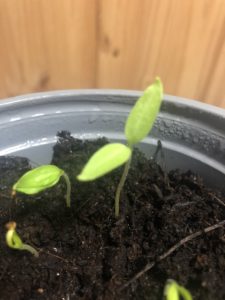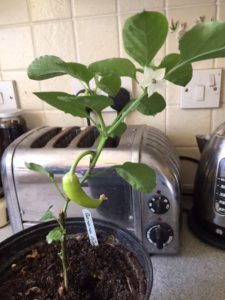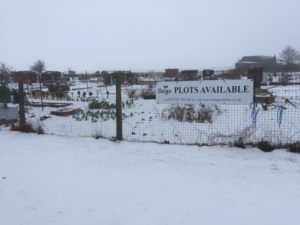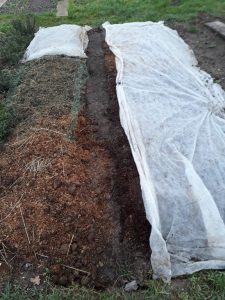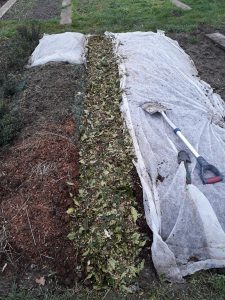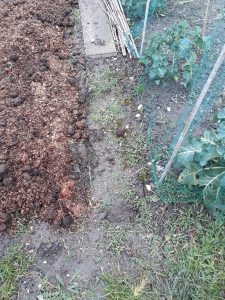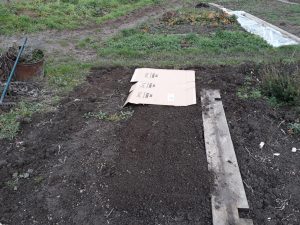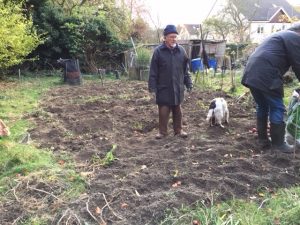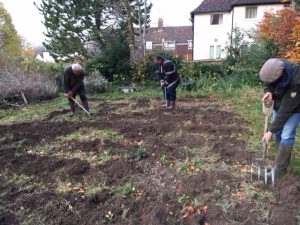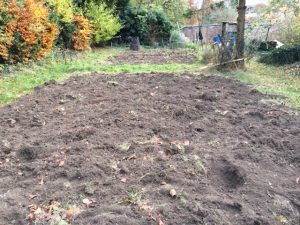Spring is here with warmer days, lighter evenings and daffodils and tulips blooming. April can be a busy month with seeds to sow and jobs to do around the plot. The lighter evenings also help as there is more time to work in our gardens or plots! April is also a good time to cut the grass and weed regularly and plant perennials for the summer months.
If your daffodils or tulips have finished flowering, now is the perfect time to deadhead the old flowers. This is important so all the energy can go in to the bulb to produce good flowers next year. You should also allow for the stems and leaves to die back naturally. Once the foliage has died back naturally, you can lift it and store it dry and plant it again in the autumn. Of course, if you would prefer, you can leave them in the ground. I plan to lift mine to make more space to grow other crops.
Now is a good time to plant out second earlies, salad and main crop potatoes. Some seed companies suggested waiting to plant main crop as there is no rush to plant them out. You can dig a trench 6 inches deep and place the seed potatoes inside the trench about 12 inches apart and 3 ft between the rows. Main crop potatoes should be spaced at least 18 inches apart to ensure larger potatoes. Or why not try the no dig method? To do this use a dibber to make a 6 inch hole and drop the seed potato into the hole. Click here to find out more information about no dig potatoes. Potatoes are hungry plants and it’s best to plant in well-rotted manure or compost. It might be a good idea to add fish blood and bone, which can be found at our members’ shop for £0.70 a kg. Click here for more information on the fertilisers we sell in the members’ shop and how to use them.
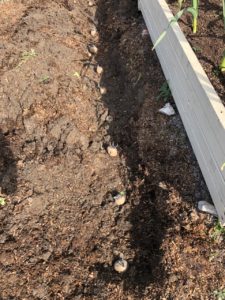
Sweet peas can be planted out in the middle of April. Sweet peas like rich soil, so it’s a good idea to plant in rotted manure or compost and provide them with support to get them off to a good start and you will be rewarded with many flowers.
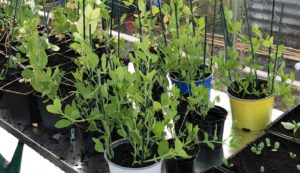
Now is a great time to harvest the first of asparagus. We’ve had some cold nights, especially at North Road allotment site and its important to protect the asparaus spears by covering it with a fleece. If you want to plant asparagus, April is the last month you can do this. Dig a V shape trench about 8 inches deep and 30cm wide. Create a mound of compost about 7 inches high along the bottom of the trench for the crowns to rest upon. Cover the roots with soil and press firmly and water well. April is the time to harvest spring cabbages, cauliflowers, broccoli, kale and any remaining leeks you have.
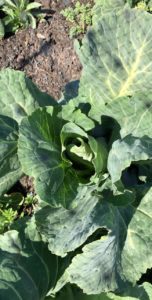
Grass paths or lawns will need to be mowed this month. Resist the temptation to cut quite low, like you would in the summer. It’s much better to mow the lawn quite high to even the grass and when the weather warms up next month, you can cut lower. This will result in a greener and healthier lawn.
Now is a good time to prune cherry and plum trees as they’re growing. You should do this once the leaf buds have opened. Click here to find out how to prune plum trees. Click here to find out how to prune cherry trees.
You should also harden off young plants before planting them outside. Bring the plants outside in the day when it’s warm outside and bring it back in again at night. This will allow young plants to slowly accustom to lower temperatures. Alternatively, cold frames and cloches can be used by opening them in the day and closing them at night.

Now is a good time to plant flowers such as lilies, gladioli and dahlias. Make sure you have good drainage, especially if you’re putting the bulbs in pots or containers because they may rot. Bulbs are usually planted down three times their height and one bulb apart, but it’s best to check the instructions your bulbs came with. Make sure you plant in compost or well-rotted manure. Why not stagger your planting to enjoy blooms all summer?
April is a good time to get ahead and start your seeds. I’ve already sown courgettes and pumpkins indoors and chard and spinach outdoors. See a list of seeds you can sow this month. Click here to have a look at the sowing and harvest chart.
Sow indoors
- Cucumbers
- Courgettes
- French beans
- Marrows
- Melons
- Runner beans
- Squash
- Pumpkins
- Tomatoes
Sow outdoors:
- Beetroot
- Chard
- Carrots
- Lettuce
- Leeks
- Radish
- Peas
- Turnip
- Spinach
Click here to see a full list of seeds you can sow this month.






